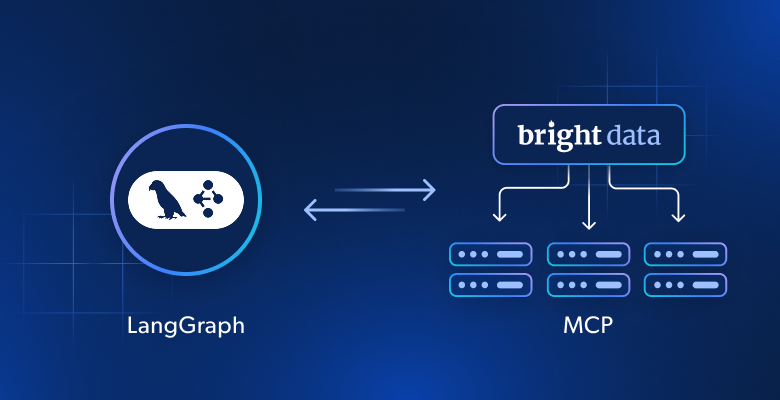ESG Data Is No Longer A Niche Criteria:
A Vanson Bourne survey sampling two hundred and fifty businesses across the United States and the United Kingdom revealed that less than half (45%) of US and UK businesses possess the access to the right public web data needed to make informed decisions regarding ESG-related objectives.
Why is that significant?
ESG assets are projected to “exceed $53 trillion” and represent more than one-third of the $140.5 trillion in projected total assets under management by 2026, according to Bloomberg. Given these projections, ESG can no longer be ignored or identified as niche criteria for investment, it is now a must-have for any financial portfolio.
More so, today, in line with the ever-growing emphasis being placed on ESG compliance, investment firms such as financial institutions, banks, insurance agencies, private equity, and venture capital firms have all begun relying heavily on external ESG data in order to properly monitor and assess the identification and quantification of risks and opportunities within the companies they choose to invest in.
This makes it necessary, now more than ever, for businesses to be able to access the same information financial institutions are currently using to perform their evaluations on them.
This allows businesses not only to understand the criteria to which their performances are being graded on, it also provides them with the opportunity to properly measure as well as benchmark their own ESG-related objectives against the masses in order to identify and act upon the material risks and growth opportunities currently facing their organizations.
Further stressing the importance, the previous Vanson Bourne ESG survey shows that just over three-quarters (76%) of US organizations belonging to the finance, banking, and insurance sectors base their investment strategies off of ESG factors; in the UK, this was 67%.
With that being said, there has been an ever-growing focus on using ESG data sets, a form of public web data, to monitor ESG criteria across an organization’s portfolio – presenting a unique way to evaluate ESG criteria as well as investments in line with the increased demand for it.
The criteria many ESG investments are based on include, but are not limited to:
- Environmental practices: Energy use, emissions, air quality, water use, waste and pollution output as well as resource reduction efforts.
- Societal: Harassment and discrimination lawsuits, board and organizational diversity, human rights, social involvement or involvement in worthy causes.
- Corporate governance: Executive salaries, board independence and composition, labor practices, etc.
These criteria have now become of key importance, as understanding the role of ESG data and how to source is not only beneficial for external investors but also for company executives to make strategic informed decisions designed to boost their ESG-compliance scores.
The Gap In Access To ESG Data:
Given the diverse set of potential ESG data points available online today, investment firms and businesses alike are incorporating the use of alternative ESG data collection methods as a prime means of evaluating ethical, environmental, and financial performance across all organizational structures.
However, the Vanson Bourne research revealed a few unexpected barriers standing in the way of US and UK businesses from accessing the same ESG insights investment firms are tapping into in order to perform their evaluations of these organizations.
In the US for example, just over half (54%) of organizations surveyed claim that they have the access to both the alternative and internal data sources needed to make informed decisions concerning their ESG objectives. This gap is considerably widened in the UK, with only 31% of UK respondents claiming they possess access to the right ESG data.
These data sources include self-reported metrics such as:
- Company disclosures, annual reports and filings
- Information displayed on company websites surrounding ESG objectives and efforts
- Internal company metrics
Third-party data sources providing ESG data statistics that can be found by searching:
- Reports by non-governmental organizational (NGO)
- Government reports, websites and statistics
As well as real-time ESG data, which can be compiled from:
- News reports by reputable and established media outlets
- Posts shared on social media discerning positive or negative sentiment around ESG concerns.
- Company reviews or reviews surrounding employee sentiment
- Satellite imagery to track deforestation as well as other environmental factors
With regard to the access, the Vanson Bourne survey revealed three surprising variables standing in the way of businesses tapping into this relevant ESG data:
- A lack of software and staff (69%) – respondents say they were in need of better software for data collection and dissemination.
- The need of a more dedicated, better resourced staff (64%) to improve data collection and access to ESG data.
- The need for clearer guidance from the government (54%) about what data could be collected and used.
Sourcing ESG Data:
Despite these barriers, business leaders surveyed indicated that they are making use of data from a range of sources.
A large determined majority (80%) of these companies say that they are beginning to work with either public or private partners to mitigate the lack of access to data in order to address ESG-related objectives such as climate change.
With regard to the data pathways these companies are using:
Third-party resources:
- Some 59% of organizations across both regions say they are drawing their insights from publicly accessible sources.
- Over a third (36%) of respondents say that they use statistics provided by local government authorities as a first inline data resource, with central government departments being the most common partners for UK (32%) and US (42%) organizations to work with when it comes to using data to tackle climate change.
Example: Monitoring rising sea levels or electrical grid failures could help asset managers peer into a future of impending capital spending. Additionally, data collected from government-provided automobile traffic emissions reports could help determine the demand at shopping malls, storefront parking lots, garages or other areas of commerce.
Public web data:
- Just under half (48%) of UK and US businesses use public web data – such as news reports, social media, company annual reports, etc. – to make better informed decisions regarding environmental considerations.
- It is more common (53%) for US organizations to use public web data for this purpose, compared to their UK counterparts (41%).
Example: NGO reports or academic research pertaining to regional climate change or natural disasters statistics can help companies determine if it is wise to invest in construction within a particular region. It allows them to weigh the impending physical, indirect as well as policy risks that can be accompanied by extreme weather, such as damage to company assets, disruptions to the supply chain, or future caps on emissions.
Internal metrics:
- The largest majority (69%) of US and UK organizations report using internal data generated by their own business activities and operations to forward their environmental decision making processes.
Example: Peering into employee statistics or internal company metrics could help uncover hidden or unconscious bias during the hiring process or within the workplace culture and identify areas to improve upon to promote workplace diversity.
ESG In Public Web Data:
While the research demonstrates increased importance being given to developing business models that promote greener processes, it reveals noticeable gaps in understanding of how to access and leverage ESG web data in order to reach sustainability objectives across the private sector.
Considering the majority of businesses (52%) surveyed don’t use public web data collection methods as a means of evaluating ESG criteria, there is a lot being left on the table with regard to insights that could measure sustainability efforts on a more in-depth level, as opposed to specifically relying on general value propositions.
This suggests that more needs to be done to build recognition of the value and availability of public web data.
ESG Data Sharing Is Caring:
Despite the growing importance of ESG, the majority of US and UK businesses remain hesitant to share company-generated data that could help researchers address issues such as climate change and sustainability, and many businesses struggle to even identify what data could be useful in this regard.
Sharing ESG data not only has the potential to assist researchers and academics in tackling issues such as climate change, but it also brings greater transparency to the alternative ESG datasets that are steering countless investment decisions worldwide – helping keep companies accountable to their sustainability commitments, while driving policy in the public sector.
Sharing ESG data will also help academics, researchers and public bodies develop an overall framework of how ESG data should be used, stored, and measured to better understand how to best address challenges related to ESG.
According to the survey, just under a third (31%) of UK businesses claimed they are completely transparent and provide all the green data they have on the environmental impacts of their business to both clients and customers; in the US, it was less than half (43%).
Some 24% of UK respondents reported there is a possibility of sharing company-generated data in the future, however, they would need to know what the data will be used for in order to properly weigh their decision to share it. In the US, 11% of respondents shared similar sentiments.
According to the research, the reluctance around sharing ESG data mainly stems from a clear lack of knowledge around the subject and the absence of a centralized system that encourages data sharing as well as guidance about ESG data and how it makes an impact.
The Future of ESG Data:
As we drive forward towards a more sustainable future, a new dawn awaits the world of ESG data – from its methods of collection to the new formulations of understanding emerging from these large, complex, and ever-expanding online datasets.
As ESG criteria is being used by the bulk of investment firms to consider companies’ financial as well as non-financial related metrics – a trend that is projected to become more widespread in the next few years – misunderstanding and misinterpreting the role and importance of this data can have far-reaching negative implications for an organization, stretching across a company’s brand image all the way down to its bottom line.







